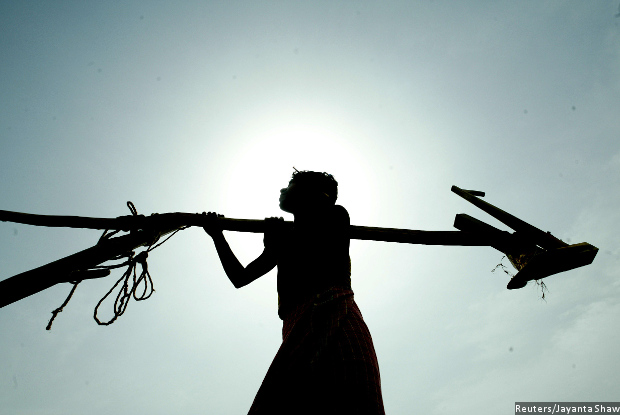Rising Heat Could Cut 3.6% Of India's Daylight Work Hours
India is set to lose 3.6% of annual daylight work hours by 2025 due to rising temperatures, reveals an IndiaSpend analysis of data in a new United Nations report.
The loss of daylight work hours could increase to 5.2% in 2055 and 8% in 2085, assuming a consistent rise of 2.7°C, according to Climate Change and Labour: Impacts of heat in the workplace, released by the United Nations Development Program (UNDP).
Exploring the link between rising temperatures and productivity loss, the UNDP report said South Asian countries will be the most affected by rising temperatures; European and South American countries will be the least affected. The report is the latest to warn of productivity losses resulting from climate change.
The worst-affected countries globally will be Burkina Faso, Cambodia, Pakistan and Maldives.
In May, India recorded its highest-ever temperature of 51°C in the town of Phalodi in the western state of Rajasthan. In the southern state of Telangana, as many as 315 people died this year (until May) from heat-related causes, and as IndiaSpend reported in April 2016, heat-wave deaths in India increased 296%, or three times, over the last 23 years.
The year 2015 was the third-warmest year recorded in India since record-keeping began in 1901 and as many as 22,563 people have died in heat waves across India between 1992 to 2015, as we reported.
Source: Climate Change and Labour: Impacts of heat in the workplaceNotes:1. The percentages refer to potential annual daylight hours when workers slow down or take more rest due to the rising heat, leading to health and productivity issues.2. These are preliminary and indicative results for a selection of countries based on model data in an IPCC analysis. An updated analysis is due in 2016. The data is based on a working intensity of 300 watts, which is a reasonable mid-point level for a variety of jobs in agriculture, industry and construction. The share work capacity (work losses at very intense physical work) would be twice as high as the numbers in the table. Share work indicates a job that cannot be done by one worker, such as building a road or a bridge.
Excessive heat while working, generally at temperatures above 35°C, creates occupational health risks and reduces work capacity and labour productivity. Maintaining a core body temperature close to 37°C is essential for health and human performance, and large amount of sweating as a result of high heat exposure while working creates dehydration risks.
Outdoor workers with a moderate and heavy workload exceeded the threshold limit value of 28°C and experienced 18-35% productivity loss, according to this 2014 study from Chennai.
4 deg C temperature rise can lead to 13.6% work-hour loss
The projected annual loss of daylight work hours in 2085 can further rise if temperatures do.
In India, an 8% loss in daylight work hours can be reduced to 7%, if the temperature rise is limited to 2.4°C, but the work-hour loss will surge to 13.6% if the temperature rises by 4°C.
A large part of southern India, the eastern and western coasts, which have been unaffected by heat waves, are projected to be after 2070 and will be exposed to extreme heat-stress conditions, intensification of heat wave and heat-stress leading to increased mortality, IndiaSpend had earlier reported.
Source: Climate Change and Labour: Impacts of heat in the workplace
India will lose 1.8% of its GDP due to climate change
Those in the lowest-income group--heavy labour and low-skill agricultural and manufacturing jobs--are among the most susceptible to climate change, according to the UNDP report.
India has 263 million farm workers and 13 million workers in factories. Without changes to current global behaviour on climate change, India would see economic losses equivalent to 1.8% of annual GDP by 2050, widening to 8.7% by 2100, predicted this 2014 report from the Asian Development Bank (ADB).
If mitigation and adaptation steps keep the temperature rise below 2°C, economic losses could be limited to below 2% of GDP by 2100, the ADB report said.
Labour productivity impacts could reduce output in affected sectors by more than 20% during the second half of the century, according to estimates in the Intergovernmental Panel on Climate Change (IPCC) 5th assessment report. The global economic cost of reduced productivity may be more than $2 trillion by 2030.
(Saha is a freelance journalist based in New Delhi.)
We welcome feedback. Please write to respond@indiaspend.org. We reserve the right to edit responses for language and grammar.
__________________________________________________________________
Liked this story? Indiaspend.org is a non-profit, and we depend on readers like you to drive our public-interest journalism efforts. Donate Rs 500; Rs 1,000, Rs 2,000.



